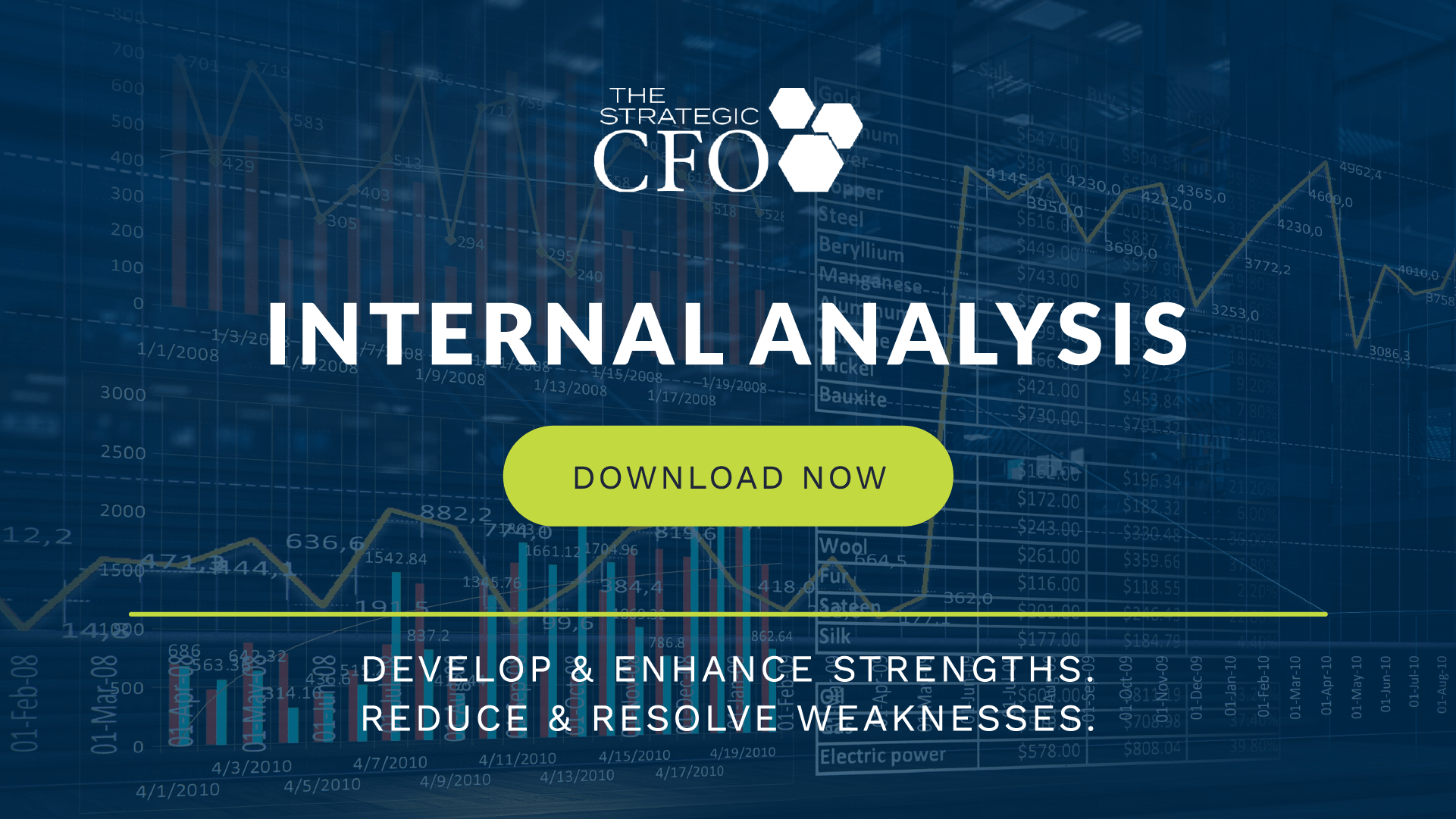Outsourcing is something that has always existed, but has seemed to become the “norm” for most companies.  Rightly so, outsourced workers are an easy solution for financial leaders to mitigate costs.
Rightly so, outsourced workers are an easy solution for financial leaders to mitigate costs.
The big question we’re asking is: Do You Need More Hats or More People?
If you’re looking at outsourcing, the first step is to complete an internal analysis to study your strengths and weaknesses. Need guidance in conducting an internal analysis? Download the free Internal Analysis Worksheet now.
This is our third and final blog of our “are you wearing too many hats?” blog series. Initially, we started with the concept of having “too many hats“… meaning you as a financial leader have been given additional roles that go outside of what you thought you signed up for.
In our last blog, we discussed how millennials transition our CFO roles from traditional “CFO hats” using more innovative tactics. We also analyzed how technology may be able to help you complete the unfinished tasks in your company.
CFOs are currently struggling because of their many hats. What do you do when the weight of responsibility is too much?
Our Answer is Delegation
I recently moderated a Q & A panel of three CFOs, and heard very different answers from all three when discussing how to handle their “too many hats.” An interesting response was delegation, and handling too many tasks. How do you delegate these tasks, and who do you delegate them to?
One solution is outsourcing.
How Technology Connects You to Outsourced Workers
As discussed in our last blog, technology impacts a company by relieving some of the responsibilities on individuals. Routine tasks can often be performed by computers, freeing up workers to spend their time on more value-added tasks.
Due to cloud computing and improved applications, outsourcing your work is a lot easier and cheaper.
How Much Does Outsourcing Save You?
I know what you’re thinking… “Why don’t we just polish what we’re lacking on and allocate our budget to that?”
Some projects are more costly than others. For perspective, let’s say you were starting a new company and needed to design the website. The costs of hiring programmers and engineers in house would be tens, maybe hundreds of thousands of dollars. Compare this to a few thousand you can pay to workers outside of your company.
When starting your own company, you should also consider outsourcing projects that you are unfamiliar with. Although it is important to learn all aspects of a company, you don’t need to do it all at once. Having outsourced workers saves you money and time and provides expertise that you may currently lack.
In my own company, we outsource a lot of projects nationally and internationally (particularly with the one-time deals). We even outsource the projects to other companies, not just freelanced workers. Because our current staff is not as familiar with graphic design, we hire freelancers to do our designs and white-papers. We come up with the content, however, which reflects how employees provide the value-added information in a company.
What Should You Outsource?
We want to make sure that the tasks we delegate are the tasks that don’t necessarily make us money. What does that mean? Here are a few that we recommend you consider outsourcing:
- Human Resources
- IT and Cloud Computing
- Website Maintenance
- Outsourced Accounting
- Insurance
- Taxes
A better question would be, what can you not outsource?
The Risks of Outsourcing
Although outsourcing is a great solution to get rid of some of your hats, you may want to be wary of what you assign…
Value-Added versus Non-Value-Added Tasks
Often, we have to decide which tasks are more important than others. Even within the office, you have to choose which tasks to hand off to other trusted employees, and which tasks you need to complete yourself.
Typically, you would choose the value-added tasks because you, as a financial leader, are meant to add value to the company. You don’t want to assign important tasks to freelancers or offshore outsourced employees, because (presumably) no one does it as well as you do. Which brings me to my next point…
[highlight]Do you find yourself gradually outsourcing more tasks for your company, rather than handling them yourself? Download this free Internal Analysis white-paper to find out why.[/highlight]
Laziness to Learn
So you’ve got a good set of employees, as well as outsourced workers. The budget is comfortable and your company is running smoothly. No one wants to change a system if it’s working fine, right?
Wrong.
As a CFO or financial leader, you are meant to be the wingman to the CEO of your company. The company should always seek to grow and adapt to new systems and technologies the business world has to offer. Remember that outsourcing is only meant to take some weight off of your head, not take all of your hats away completely!
The point of outsourcing is to take hats off. If you find that you are outsourcing any of your core competencies, it’s time to conduct an internal analysis.
Cyber-Security Issues
Keep in mind, whoever you outsource your tasks to will need access to some of your company’s information such as passwords, financial account information, etc. There are often cyber-security issues that occur, putting hundreds or thousands of people’s information at risk.
When deciding what information to release to your outsourced parties, the first priority you should protect is the financial information – your company’s and your customer’s information. If you can, avoid giving third party companies access to any financial information. Most platforms allow you to create “moderator,” “contributor,” “editor,” or any other variation that is other than “administrator.”
Government Regulation
Outsourcing government-regulated tasks can be a little tricky, particularly with countries that do not have the same regulations. This issue is industry-specific. Some examples would be insurance, medical, and financial services.
Cultural Barriers
When you outsource to workers who have a language barrier, time difference, or just a generally different way of handling projects, it may be a bit more difficult to execute a task. Companies have to be cautious for the sake of time, because one cannot hand a project to an outsourced worker who needs training constantly.
This is where adaptation comes in… In our company, we freelance our graphics to outsourced workers in the Philippines. We have to prepare our instructions and content a week, sometimes two, in advance. Why? Because of the time difference and the resources available to our contracted worker. We want to make sure his needs are accommodated as well as our own, and we adapted to his way of doing business.
Conclusion of Having “Too Many Hats”
There are always risks in trying new things in your company – in adapting to new business systems and technologies. In this three-part series of “wearing too many hats as a CFO“, we explored solutions such as millennial tactics, technology, and outsourcing.
The drive of a millennial + experience of older generations = success in your company.
Adaptability is key – Technology is created to help you.
Outsourcing can lessen the number of “hats” you wear as a CFO.
Regardless of the functions that you decide to outsource, conducting an internal analysis will help confirm your core competencies and identify areas that could easily be outsourced. Download your free Internal Analysis worksheet to start developing and enhancing your strengths as well as start reducing and resolving your weaknesses.

[box]Strategic CFO Lab Member Extra
Access your Strategic Pricing Model Execution Plan in SCFO Lab. The step-by-step plan to set your prices to maximize profits.
Click here to access your Execution Plan. Not a Lab Member?
Click here to learn more about SCFO Labs[/box]












